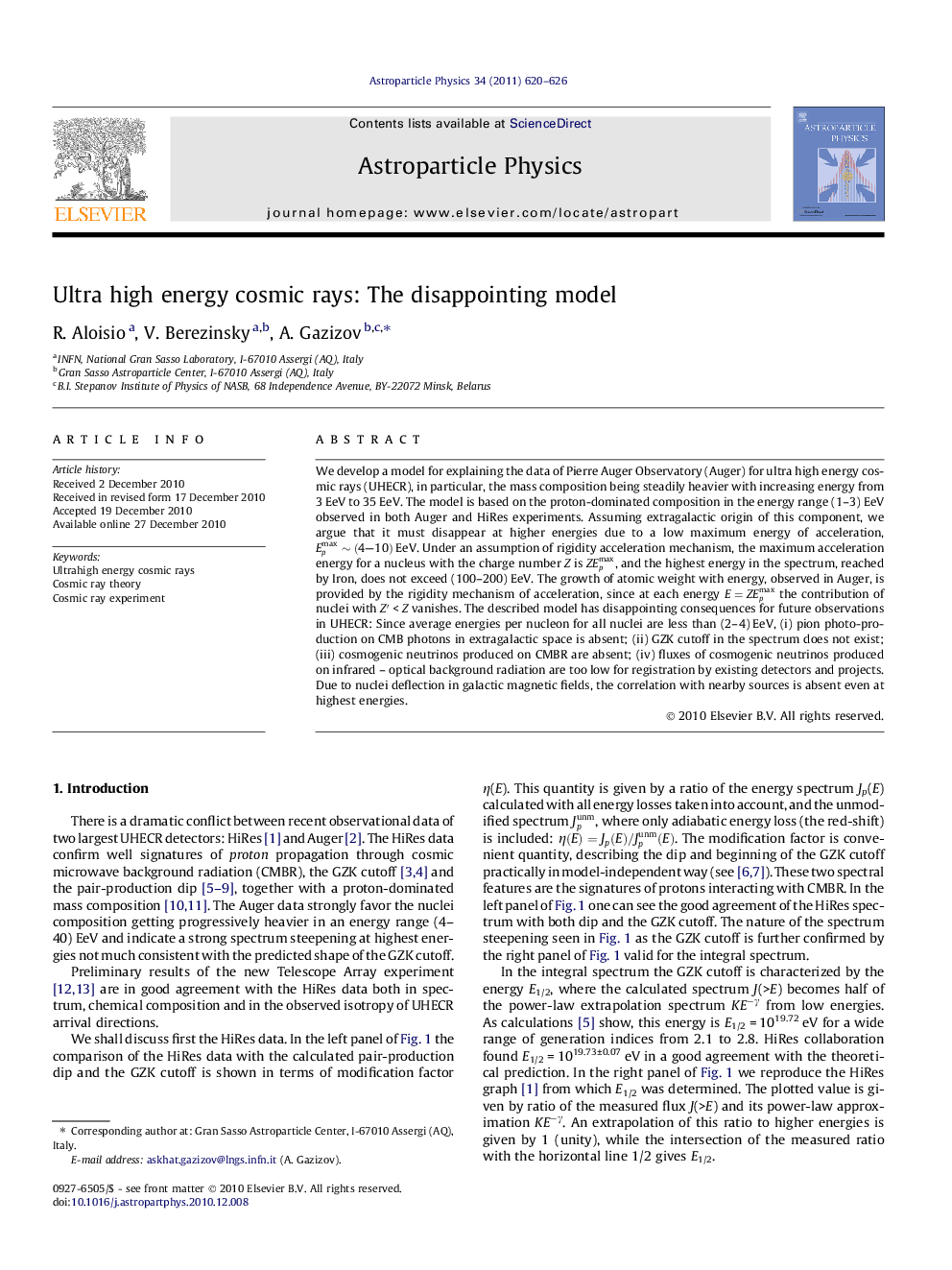| Article ID | Journal | Published Year | Pages | File Type |
|---|---|---|---|---|
| 1770981 | Astroparticle Physics | 2011 | 7 Pages |
We develop a model for explaining the data of Pierre Auger Observatory (Auger) for ultra high energy cosmic rays (UHECR), in particular, the mass composition being steadily heavier with increasing energy from 3 EeV to 35 EeV. The model is based on the proton-dominated composition in the energy range (1–3) EeV observed in both Auger and HiRes experiments. Assuming extragalactic origin of this component, we argue that it must disappear at higher energies due to a low maximum energy of acceleration, Epmax∼(4–10) EeV. Under an assumption of rigidity acceleration mechanism, the maximum acceleration energy for a nucleus with the charge number Z is ZEpmax, and the highest energy in the spectrum, reached by Iron, does not exceed (100–200) EeV. The growth of atomic weight with energy, observed in Auger, is provided by the rigidity mechanism of acceleration, since at each energy E=ZEpmax the contribution of nuclei with Z′ < Z vanishes. The described model has disappointing consequences for future observations in UHECR: Since average energies per nucleon for all nuclei are less than (2–4) EeV, (i) pion photo-production on CMB photons in extragalactic space is absent; (ii) GZK cutoff in the spectrum does not exist; (iii) cosmogenic neutrinos produced on CMBR are absent; (iv) fluxes of cosmogenic neutrinos produced on infrared – optical background radiation are too low for registration by existing detectors and projects. Due to nuclei deflection in galactic magnetic fields, the correlation with nearby sources is absent even at highest energies.
